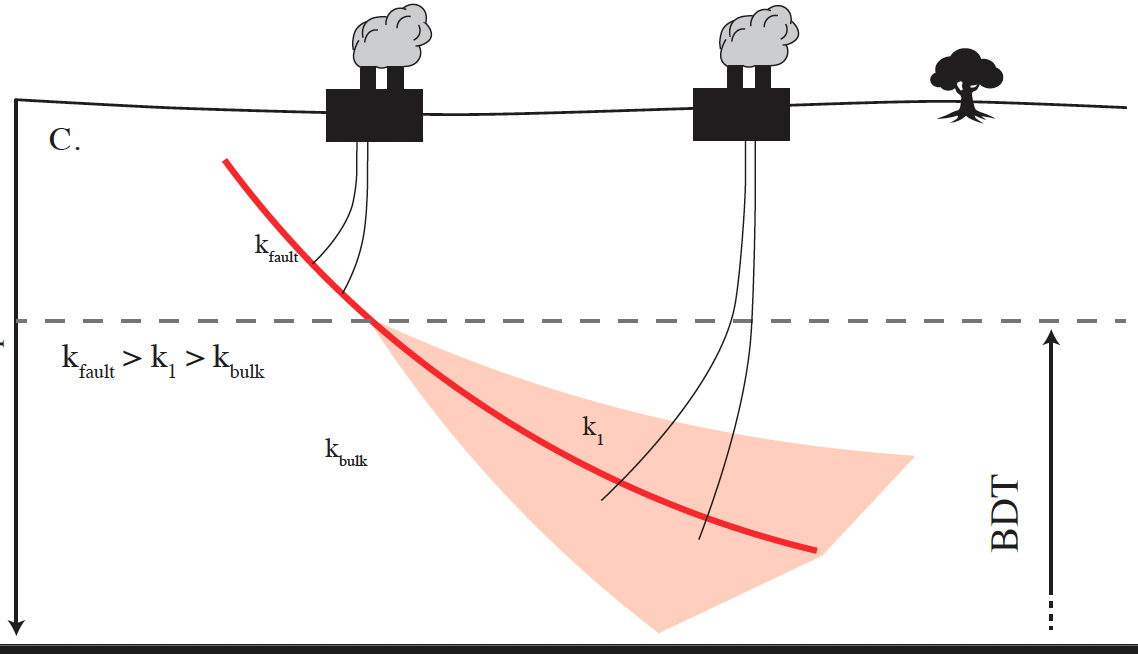
My research
My interests:
The brittle ductile transition
One of the most complex rheological transition in the Earth’s crust, it is central to most tectonic phenomena. In particular, it is thought to be the strongest part of the lithosphere, and to define the lower limit of the seismogenic zone. It is characterized not only by a transition from localized to distributed (ductile) deformation, but also by a gradual change in microscale deformation mechanism, from microcracking to crystal plasticity. Through high-pressure, high-temperature triaxial rock deformation experiments, I explore the conditions bounding this transitional layer in order to further our fundamental understanding of crustal dynamics.
Supercritical geothermal energy
The recent discovery of supercritical water resources above magma bodies has sparked immense interest in enhancing geothermal energy output by extracting supercritical fluids characterized by pressures above 22 MPa and temperatures surpassing 375 °C. This approach, is estimated to be able to boost geothermal plant energy output by a factor of 10 compared to conventional geothermal plants. However, this resource lies within rock reservoirs with complex brittle-ductile mechanical behavior and in which little is known about fluid circulation. Using a gas-based rock deformation apparatus, I study the hydraulic properties of rocks under supercritical condition.
Earthquake mechanics
Earthquakes are some of the most destructive natural events threatening our societies and forecasting the time and location of main shocks has driven intense research in both the fields of seismology and rock mechanics, but to this day, a reliable early warning system is yet to be developed. Recently, field and laboratory evidences have shown that precursory strain migration towards the fault plane prior to a quake and post earthquake damage healing occur in the rock volume surrounding faults. By the means of friction and triaxial experiments, I explore those volumetric phenomena which are likely to have a strong feedback on earthquake nucleation.
My projects:
The projects presented here are those for which I am the main PI.
MSCA postdoctoral fellowship : PERCOLATE
This project proposes to investigate the mechanics of rock deformation and fluid flow at the brittle-ductile transition by integrating advanced rock deformation techniques, X-ray 4D imaging, machine learning-based image analysis and fluid flow modelling. This project will start in April of 2026.
SNF Spark : DRUIDS
This project aims to integrate a staple design of friction experiments, namely, a direct shear module, to a high pressure, high temperature rock deformation apparatus operating at 400 MPa and 1000°C. This module will facilitate the investigation of fault friction and fault material under conditions representative of the brittle-ductile transition in the continental crust. This project is currently ongoing and will finish in April 2026.
Selected peer-reviewed publications:
-

Fault reactivation and strain partitioning across the brittle-ductile transition
How is strain partitioned around faults at depth ?
Geology — 2019
-

Time Dependent Mechanical Crack Closure as a Potential Rapid Source of Post-Seismic Wave Speed Recovery: Insights From Experiments in Carrara Marble
How fast is crack damage recovering around faults after an earthquake ?
JGR — 2021
-

Permeability partitioning through the brittle-to-ductile transition and its implications for supercritical geothermal reservoirs
Can permeability be created in granite at supercritical conditions ? How is rock ductility impacting the spacial distribution of permeability within geothermal reservoirs ?
Nat. Comm. — 2024

